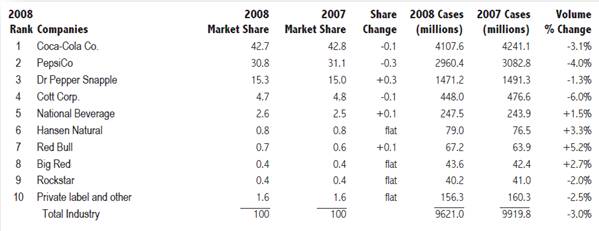Market share
Market share is the percentage of all the sales in a particular market that are held by one brand or company. This can be measured by volume (units sold) or by value (the revenue generated)
![]()
So if the sales revenue for a firm is $50m of a market worth a total of $250m, then the firm's market share is 25%. Firms seek to increase their market share as this conveys certain advantages.
Normally, an increasing market share means that the company is growing in influence or power within that market. The market leader will often have higher economies of scale than competitors and will be able to charge lower prices or have a higher profit margin.
We can make this measure for an individual brand or an individual company. Using this measure of company performance allows us to see how well a firm is competing against their rivals and who is building, and who is losing, market share. It is useful to find out the sales level achieved by the firm's largest competitors and then use that information to compute relative market share.

"The important factor in computing relative market share is not the exact number associated with the sales volume, your position relative to the competition is more important."
Kenneth J. Cook
The AMA Complete Guide to Strategic Planning for Small Business
For example, Coca-Cola's sales have historically made up a large percentage of the total sales of the cola beverage industry, and it had dominated the market. However, over recent years Pepsi Cola has managed to increase its relative market share.
According to Beverage Digest's 2008 report on carbonated soft drinks, PepsiCo's U.S. market share was 30.8 percent, while The Coca-Cola Company's was 42.7 percent. Overall, Coca-Cola continues to outsell Pepsi in almost all areas of the world, except India, Saudi Arabia and Pakistan. The data also showed that both were losing share to other competitors such as Red Bull.

Source: Beverage-Digest.com
This type of information can also be used to measure market concentration, which is the extent to which a relatively small number of firms account for a relatively large percentage of the market. Concentration ratios are measures of the total output that is produced in an industry by a given number of firms in the industry. The most common concentration ratios are the CR4 and the CR8, which measures the output of the 4 and the 8 largest firms.
Information on the overall size of markets is usually available through industry associations, which commonly track both sales and growth rates. If competing firms happen to be publicly owned, their sales figures can usually be found from their annual reports. However, this information is frequently out of data. It may also be problematic to define a market with some products crossing several markets.
Is an iPad, for instance, in the netbook market, the e-reader market or the book market?